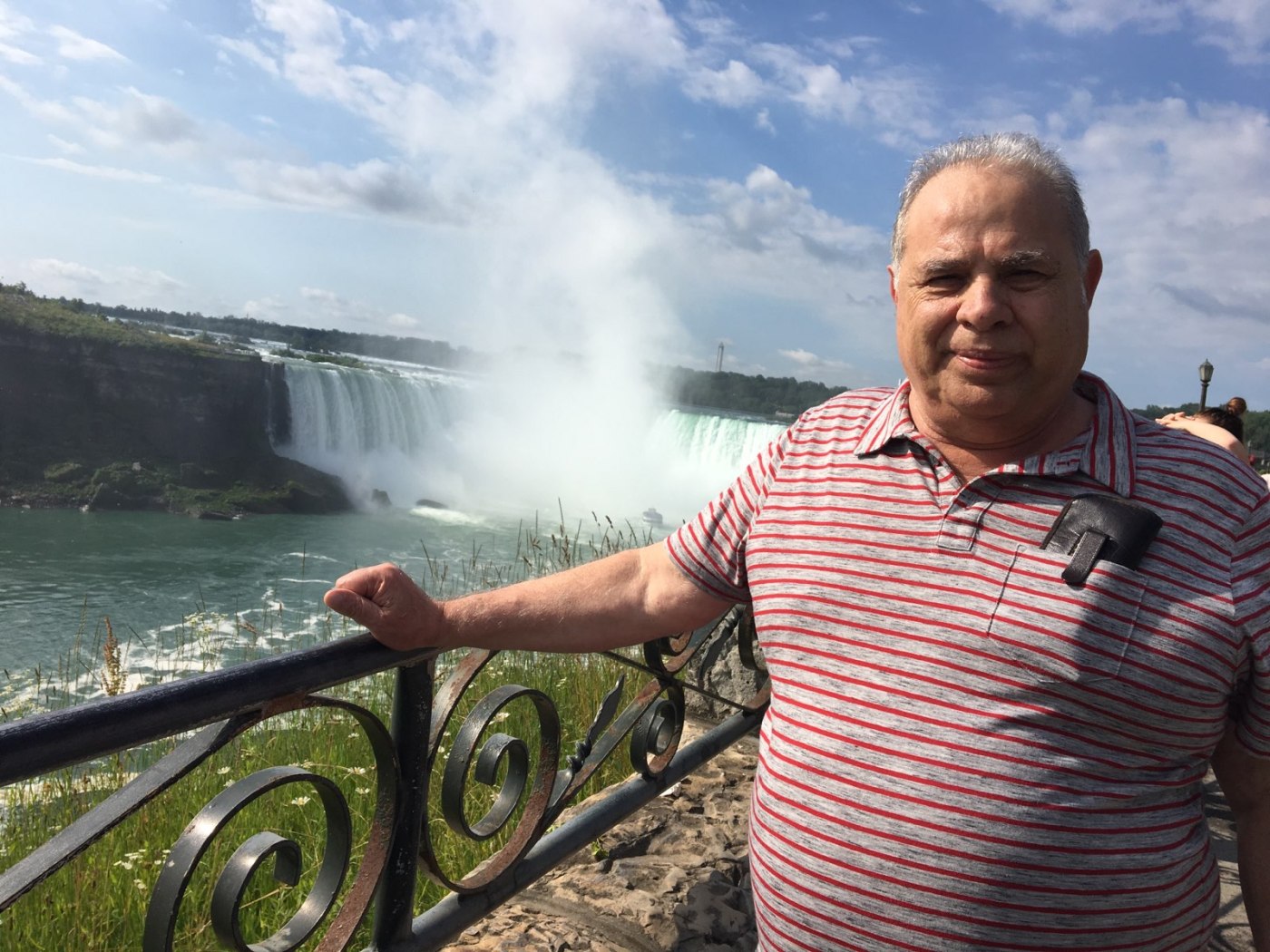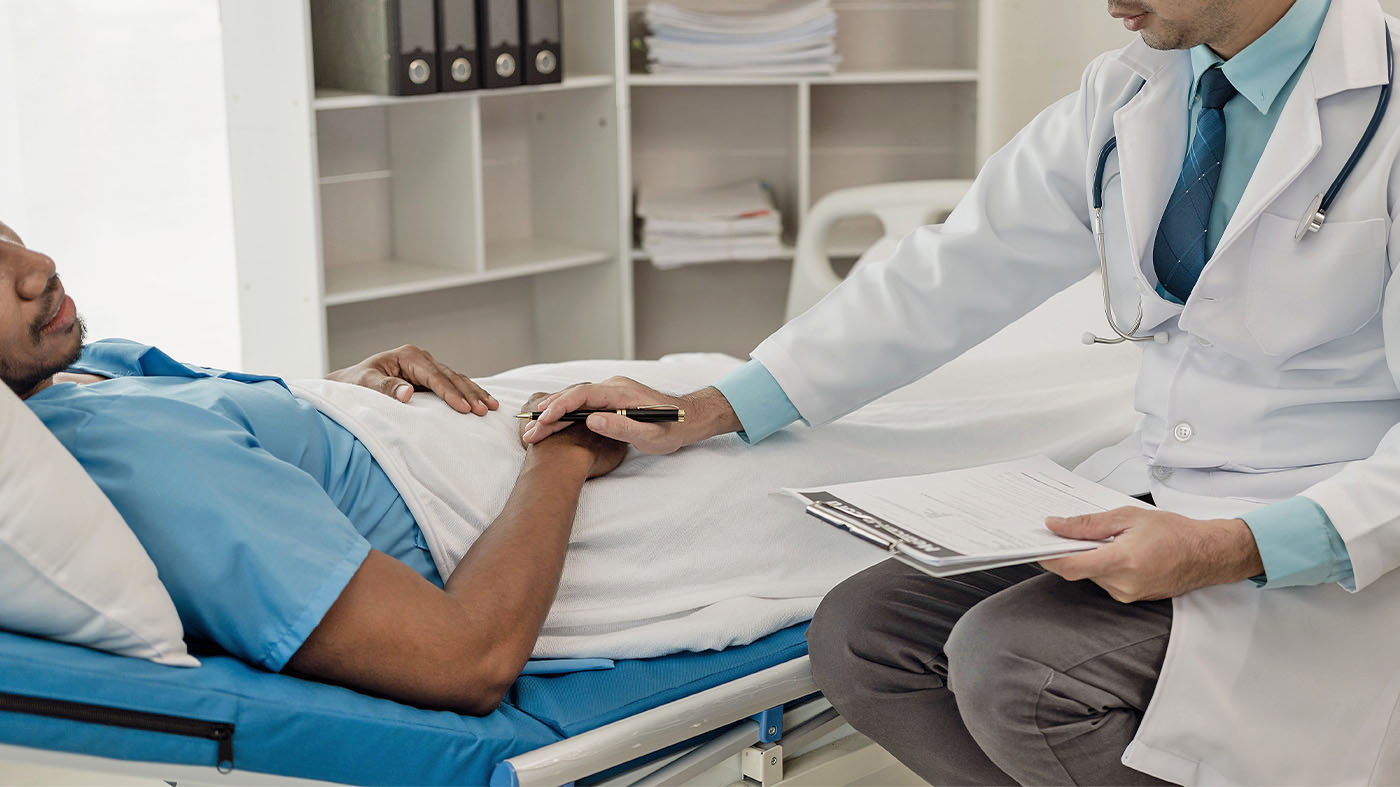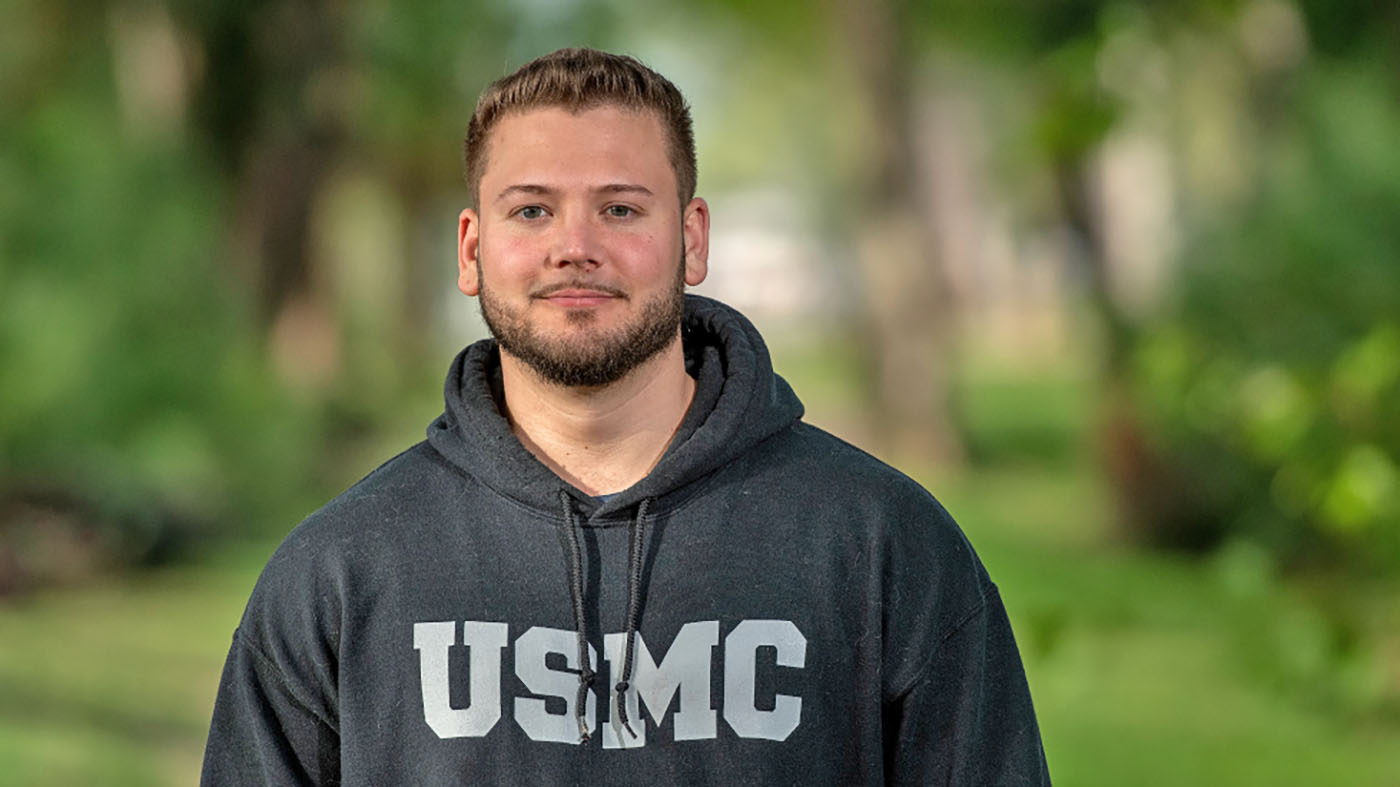The infection began with a dry cough that Michael Novielli couldn’t shake.
He soon developed fatigue, aches and a low fever.
As a 71-year-old with underlying health conditions, living on Long Island near the American epicenter of the COVID-19 outbreak, Novielli wasn’t taking any chances. So as his symptoms worsened, he went to the hospital, where he was diagnosed with COVID-19.
“I had never felt this sick my whole life,” he said.
Novielli spent four days in the hospital before he was sent back home. “I was going to wait it out,” he said. “I thought I could get rid of it at home.”
As a precaution, Novielli’s VA providers placed him on a telehealth program to monitor his symptoms at home. Once his recovery took a turn for the worse, Novielli says the VA telehealth program saved his life.
“The Best Move I Ever Made”
Michael Novielli served as a U.S. Marine during the late 1960s. He developed chronic lymphocytic leukemia after exposure to Agent Orange in Vietnam. Later in life, he was also diagnosed with diabetes.
Novielli’s care team at the VA Medical Center in Northport, New York, first suggested Remote Patient Monitoring – Home Telehealth (RPM-HT) about five years ago. They gave Novielli a blood pressure monitor that he could use at home to keep track of his health.
“It was the best move I ever made,” said Novielli. “For me, my blood pressure is very important, and using telehealth, they are able to monitor that from home.”
After being hospitalized with COVID-19, Novielli was happy to use RPM-HT to track his recovery once he returned home on April 3. Through the COVID-19 RPM-HT program, Novielli began sharing his temperature, oxygen levels, and heart rate every day with the VA telehealth team at the Northport VAMC.
On April 22, more than two weeks after Novielli was discharged from the hospital, Marjorie Rogers, a registered nurse with 14 years’ experience with VA, noticed something unusual in Novielli’s symptoms. Although his temperature and oxygen levels were normal, Novielli’s heart rate was elevated.
Rogers called Novielli immediately. “She said, ‘Your heart rate is up. Something’s definitely wrong. Go to emergency right away,’” Novielli said.
When Novielli arrived back at the hospital, doctors found that COVID-19 had caused fluid to build up in his lungs. Novielli had developed pneumonia.
This time, Novielli was in the hospital for almost two weeks. He was on oxygen and antibiotics, felt weak and tired, and lost 40 pounds. But after 13 days, he said, “The monster had left me.”
“Marjorie saved my life,” said Novielli. “If I wasn’t on the telehealth, I would have stayed home with the pneumonia, and who knows what would have happened.”
Using Telehealth To Stop the Spread
For VA providers like Marjorie Rogers, RPM-HT has been an important tool in fighting the spread of COVID-19 at the Northport VA.
“Because it’s a new disease, there is so much we don’t understand about it and that we’re learning,” Rogers said. “Through telehealth, we are keeping our Veterans safe from exposure. They’re not going into the VA facilities if they don’t have to, since we’re able to monitor them in their homes.”
Alisa Tribley, a registered nurse who is the Northport telehealth coordinator, said that telehealth has grown to meet the needs of Veterans with COVID-19. She said that at the peak of the local outbreak, over 140 Veterans were enrolled on Northport’s RPM-HT COVID-19 protocol.
“With RPM-HT, we are monitoring mild symptoms that can be managed at home and recognizing if Veterans reach the point where they should go for in-person care,” Tribley said.
Making a difference
Some of the Veterans in Northport are using telehealth for the first time. Tribley said that while it is an adjustment for some, many are appreciative of the added care.
“Veterans are very grateful that they have a health care team member watching over them and being in touch with them on a daily basis,” said Tribley. “It’s very rewarding knowing that you’re making that difference for them.”
Rogers said that she felt honored when Novielli called her to thank her for intervening on his behalf.
“I really felt that his story was a testament to all the VA telehealth coordinators nationwide,” she said. “To hear him say that really gave me a sense of pride that we’re contributing to Veterans health — that we’re helping them stay alive.”
Novielli says he is thankful for all the care he received from the VA telehealth team and at the hospital. When he finally overcame the pneumonia, the health care workers on his floor applauded as he left the hospital. “It’s nice to have people like that take care of you — people who really care,” he said.
Novielli is still being monitored by RPM-HT – but his cough is finally gone, he is off oxygen, and he’s starting to go on walks with his physical therapist. He said that once a COVID-19 vaccine is developed, he wants to visit Europe and go on a cruise with his fiancé.
Novielli said he hopes that his experience encourages his fellow Veterans to take COVID-19 seriously and take advantage of VA telehealth resources.
“Going through something like this makes you feel for other people who weren’t as fortunate,” Novielli said. “I hope it encourages people to take more care, and to have a better outlook on life.”
Learn more about how you can use virtual tools, including RPM – HT, to guard against COVID-19.
Treva Lutes is a communications specialist for VA’s Office of Connected Care.
Topics in this story
More Stories
VA and the American Kidney Fund work together to fight chronic kidney disease in Veterans.
Transitioning to civilian life can be difficult. Find ways to overcome suicide thoughts with VA and Veteran organizations resources.
In this week's #LiveWholeHealth video, learn how to incorporate mindful movement into your day with yoga and stretching to improve posture, reduce stress and boost mood.






